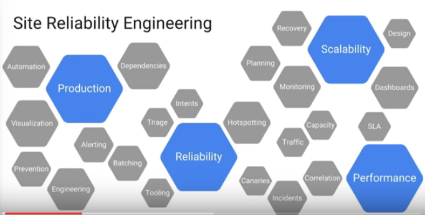Worth Reading: Real time data processing at Facebook
The post Worth Reading: Real time data processing at Facebook appeared first on 'net work.
The post Worth Reading: Real time data processing at Facebook appeared first on 'net work.
 Complex applications means complex rules.
Complex applications means complex rules.
In the last three episodes of this series, we discussed getting a copy of SnapRoute’s BGP code using Git, we looked at the basic structure of the project, and then we did some general housekeeping. At this point, I’m going to assume you have the tools you need installed, and you’re ready to follow along as we ask the code questions about how BGP actually works.
Now, let’s start with a simple question: how does BGP bring a new peer up?
It seems like we should be able to look for some file that’s named something with peering in it, but, looking at the files in the project, there doesn’t seem to be any such thing (click to show a larger version of the image below if you can’t read it).
Hmmm… Given it’s not obvious where to start, what do we do? There are a number of options, of course, but three options stand out as the easiest.
 ARM gets a buyer; SoftBank gets ... more debt?
ARM gets a buyer; SoftBank gets ... more debt?

How does Google keep all its services up and running? They almost never seem to fail. If you've ever wondered we get a wonderful peek behind the curtain in a talk given at GCP NEXT 2016 by Melissa Binde, Director, Storage SRE at Google: How Google Does Planet-Scale Engineering for Planet-Scale Infrastructure.
Melissa's talk is short, but it's packed with wisdom and delivered in a no nonsense style that makes you think if your service is down Melissa is definitely the kind of person you want on the case.
Oh, just what is SRE? It stands for Site Reliability Engineering, but a definition is more elusive. It's like the kind of answers you get when you ask for a definition of the Tao. It's more a process than a thing, as is made clear by Ben Sloss 24x7 VP, Google, who defines SRE as:
what happens when a software engineer is tasked with what used to be called operations.
Let that bounce around your head for awhile.
Above and beyond all else one thing is clear: SREs are the custodian of production. SREs are the custodian of customer experience, for both google.com and GCP.
Some Continue reading
Most of the educational documents related to PS Core Network start with Call Flows. Attach Call Flow, PDP Context, Paging, etc. So, Basically that was my problem when I started working in PS Core because the Call Flows include a lot of messages that in turn include a lot of parameters and Information Elements so […]
The post PS Core Network Concepts appeared first on Cisco Network Design and Architecture | CCDE Bootcamp | orhanergun.net.